In part one of the Popdose Guide to Prince we took a look at the start of his career up through Graffiti Bridge in 1990. Tons of good music and only a tiny bit of “Eh, not so much.” Part two brings the New Power Generation into the fold and introduces some less-than-stellar material to the mix. Every album in this era of Prince’s career has its moments, though, and since quite a few of the albums here have been heard by die-hards only, I’d bet there’s a few unfamiliar tidbits and songs here as well. It’s not all Purple Rain and Sign o’ the Times any longer, making this section quite intriguing.
 Diamonds and Pearls (1991)
Diamonds and Pearls (1991)
Diamonds and Pearls marks the beginning of a new era for Prince, the first point where an album is credited to Prince and the New Power Generation and the first time there’s a real hip-hop vibe in his songs. My 15-month-old son would tell you (if he could) that Diamonds and Pearls is the first album he really enjoys — every time rapper Tony M. appears, he bobs his head up and down and throws gangsta signs (well, okay, that may just be him indicating he has a poopy).
For me, it definitely is a style change for Prince, and even when you aren’t getting a hip-hop vibe, the pop songs are more straightforward and radio friendly than they ever had been before. Mixed in with that radio friendliness, however, is more naughty language than heard before, mostly from Tony but Prince gets in the mix as well. Most of the non-singles seem to get forgotten though, as the big three (”Cream,” ”Diamonds and Pearls,” and ”Gett Off”) still get a ton of airplay today. The latter of course contains one of the best lines Prince has ever recorded with ”now move your big ass round this way, so I can work on that zipper baby.” There’s also another funky rap track called “Jughead” that kind of gets lost at the end of the record but is worth the time to get to it. Overall, a pretty decent start to the New Power Generation.
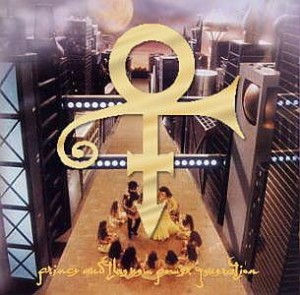 The Love Symbol Album (1992)
The Love Symbol Album (1992)
The Love Symbol Album as it’s come to be known is by far the best album of his middle period (1991-2003) and my overall favorite album from Prince. I’m not kidding, this damn thing is excellent even if it’s never ever talked about in the same vein as Purple Rain or Sign O’ the Times. I’m not saying it’s better than either of those two, but for my money this album gets me movin’ like a sexy muthafucker shakin’ his ass better than anything else in his catalog. The hip-hop vibe is definitely in full effect here and there’s just an immense amount of funk present.
It’s no secret that Prince seems to like hearing his own name and it’s never more evident in one of his songs than with the first track and lead single, ”My Name Is Prince.” I remember the first listen like it was yesterday when I was totally blown away by the immediate funk. And then comes the ridiculous, ”Sexy M.F.” which has ended up being my third favorite song ever. The third track ”Love 2 the 9’s” starts off all smooth like a mid-tempo jazz number but two minutes in turns into a blistering rap-funk workout where the booty booms. Another head-bobber called ”The Max” is sandwiched between ”The Morning Papers” and ”Blue Light,” two gorgeous sensual ballads. The movers & shakers rotate for pretty much the rest of the album with the ballads and if you aren’t a fan of the record you might never get to the 12th track, which is where the biggest hit from the album, ”7″ is buried.
The only real flaws of the album are the interludes which were meant to be sort of like a soap opera throughout the disc, narrated by Kirstie Alley. However, not all the parts are present as with them all in, it would have pushed the recording to a second disc. So some parts were cut and the story is a bit disjointed. But you’re really not listening for that anyway.
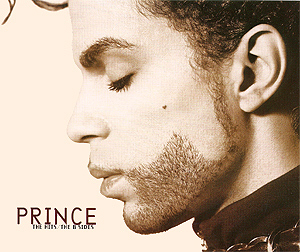 The Hits/The B-Sides (1993)
The Hits/The B-Sides (1993)
I normally wouldn’t include a hits disc as part of this but of course the Hits/The B-Sides is worthwhile of an inclusion of course thanks to some of the 45-only B-sides on this gem.
June, 1993. Prince’s feuding with Warner Brothers reaches its peak when he announces he’s going to change his name to the unpronounceable symbol on his previous album and stop putting out new music. He approaches Warner Brothers with Goldnigga — the debut album from the New Power Generation ”sans Prince” (yeah, right!) but they reject it and instead release the Hits/The B-Sides instead. They wanted to release a greatest hits collection instead of Diamonds and Pearls – and that definitely would have been a fine place for it – but instead WB got it here.
The Hits discs were sold individually, but if you wanted the B-Sides disc you had to buy the three-disc set. Seemed like an expensive bitch at the time, but this is something every even casual fan should have in their collection. Most of the tracks on the Hits discs were single versions including the single remix of “Kiss”, which wasn’t available on CD before this point. The three new songs on the two CDs — ”Pink Cashmere,” ”Peach,” and ”Pope” — were completely marginal but the rest is a spectacular look at his career.
I don’t actually know if the three disc set is still in print or if stores even stock it if it is as I don’t see it any longer — instead just the two single hits discs. But if you don’t own this yet, I’d go on the web and buy a copy of the three disc set, even if you aren’t a die hard. Some of Prince’s official B-sides are better than a lot of his material, like the dirty ballad ”I Love U in Me,” which was a nice contrast as the B-side to the romantic Sheena Easton duet off Batman, ”The Arms of Orion.”
”Shockadelica” has an interesting story behind it. Time member Jesse Johnson recorded an album in ’86 that he called Shockadelica, and he played it for Prince, who loved the record but thought it needed a title track, so he wrote this for Johnson. However, Jesse decided the album didn’t need it, so Prince went ahead and recorded it and released it before the album came out and thus it made it look like Prince had the idea of ”Shockadelica” first.
My favorite B-side of all time from Prince is three-quarters of the way down the disc: ”17 Days (the rain will come down, then U will have 2 choose. If U believe, look 2 the dawn and U shall never lose).” The song was originally intended for Vanity but got caught up in the middle of the Vanity-to-Apollonia switch, so Prince recorded it and tossed it on the B-side of ”When Doves Cry.”
Of course, the centerpiece of the B-Sides disc is one of the most played tracks — ”Erotic City.” There are so many cool elements in this song from the sped up and slowed down vocals to make Prince sound different throughout the track to what’s considered the recording debut of Sheila E, to the continued unedited airplay where radio stations to this day say he’s saying ”funk” instead ”fuck” to get away with it. Let’s also not forget that it’s a funky-ass song.
Totally worth every penny you will spend to get the whole package.
 Madhouse, 24 (1993)
Madhouse, 24 (1993)
No, no, you aren’t seeing double. There absolutely was a Madhouse 24 back in 1989 in the first part of the guide. This is a completely new version of 24 which also never got released officially but just like the earlier version was packaged and ready to go. Unlike the Dream Factory and original Crystal Ball sets which were albums pretty much by track listings only and were never really packaged together, it seems like there was every intention of releasing this and it just never saw the light.
This version is different from the rest as most of the tracks have names and no numbers, like the Marvin Gaye cover of ”(Got 2) Give It Up” which featured his daughter Nona on it. It’s really only notable for two tracks — the original jazzy instrumental version of ”Space” which would appear in a different form on Come and ”Asswoop” (which would have won best Prince song title if he had stuck with the longer version ”Asswhuppin’ in a Trunk”). ”Asswoop” is a track I’ve heard used in Prince promos and possibly as warm up music before concerts. It’s the most recognizable track to me off any of the Madhouse records.
 Come (1994)
Come (1994)
I’m not a message board type person but on the occasions that I have visited some of the Prince ones to find out information I’ve learned one important thing about Come; The majority of die hard Prince fans will rip you a new one if you start ragging on this album. I’m one of those die hards, however I understand if you don’t care for this one as it put a sour taste in my mouth when I first heard it as well.
Although the album did actually go gold it was his weakest seller in ages and that’s probably mostly due to the weird circumstances surrounding it. Most of the music on it was recorded a year earlier at the same time as the music for the Gold Experience and now having a public feud with Warner Brothers, Prince wanted to release both at the same time showing the ”old” side and the ”new” side of Prince. The album cover actually reads ”Prince 1958-1993″ as evidence that ”Prince” had died and the artist formerly known as…was alive and well. Warner Brothers nixed the idea of both albums together and Prince came out in the media saying this was a disc of old material, despite the fact that most of it was relatively new (and hell, he pulls songs out of the vault all the time).
There will be plenty of times after this that I can talk about some of Prince’s crap material, so I won’t be ragging on it either — but it has nothing to do with appeasing the masses. Rather, I’ve come to enjoy the album over the years. Sure, it’s no masterpiece by any stretch but there’s some great material on it. The 11 minute title track wasn’t even on the original version of the album that Warner Brothers rejected — in fact, they asked for it to be include apparently — which, I don’t know — seems kind of odd that the record label requested a song so remarkably sexual. I mean, it’s hard to not get turned on at least a little when you hear:
When I lay U down I’m gonna tell U what 2 feel
Don’t be surprised if I make U my daily meal
Lickin’ U inside, outside
All sides, up and down
With my tongue in the crease, baby I go ’round
When I go down, down, down, down, down, down, da-da-down
”Come” is a bit long and the oral sex simulation at the end of it is more corny than hot, but it’s great start to an interesting record. Then there’s ”Loose!” which is the most club ready non-remix that he’s put on disc. But the centerpiece of the disc was the newly written ”Letitgo” which is a wonderful overlooked pop song in his catalog but sounds completely out of place on a disc of sex and dance tunes. It’s not the greatest disc he’s ever made, it sticks out like a sore thumb and 90% of the world hasn’t heard it, but overall it’s an underrated album.
 The Black Album (1994)
The Black Album (1994)
On the opposite end of the spectrum is The Black Album which I just don’t get. Rumored to originally be called The Funk Bible, the album was recorded in 1987 and a few weeks before the scheduled release is was pulled and replaced with Lovesexy instead. It seems like Prince’s goal here was to change the pace up from his pop material and record a funk record that would blow everyone away. In reality it’s a pretty shitty record and Prince seemed to know that as in the ”Alphabet St.” video there’s actually text in it that says ”don’t buy the black album, I’m sorry.”
There’s always been a ton of rumors about why it was shelved and the one that seems to be the most legit is that Prince was tripped out on ecstasy which has appears in print in a few Prince biographies. But it’s also been rumored that both Prince and Warner Brothers didn’t like the graphic and violent nature of the odd spoken, ”Bob George” in which he slows his voice down so much you hardly know it’s him and talks about killing a woman. Then there’s the awful ”Dead On It” which is a pure rap song where he talks about how all rappers are tone deaf. The funky album lead, ”Le Grind” isn’t a terrible song and ”When 2 R In Love” also shows up on Lovesexy, but the entire second half of the disc is unbearable.
The album was released presumably as a contract filler so he could quickly get out of it as the album was only on the market from November of ’94-January of ’95 before it was retired for good. Didn’t matter though as no one bought it, mainly because everyone that really wanted it already had a bootlegged copy from back in ’87 when promo copies floated around. There are a ton of people that swear by this record, though I can’t fathom why.
 The Gold Experience (1995)
The Gold Experience (1995)
”Good morning ladies and gentlemen, boys and motherfuckin’ girls/this is your captain with no name speaking ready to rock your world” starts off ”P Control” (the P stands for another way to call a cat a kitten) introducing the world to the artist formerly known as Prince who in reality had no name other than an unpronounceable symbol.
The Gold Experience was leaps and bounds above the Black Album and Come and you can definitely hear right away that Prince was attempting to create something epic again. From the pure rock guitar of ”Endorphinmachine” to the fist pumping bridge on ”We March” or the admission by Prince himself that he thought the album ender ”Gold” was going to be the next ”Purple Rain” it’s quite obvious that he thought this was his best album in years. And it definitely is a good album. Clunkers like the ballad, ”Shy” prevent it from being a classic Prince record but it does contain his last big billboard hit, ”The Most Beautiful Girl in the World.”
Girl 6 (1996)
The soundtrack to Spike Lee’s movie of the same name was clearly much better than the film (did anyone actually see it?). The album consisted of material written by Prince and performed by him and some of his entourage. Most of it is old, with songs like ”Hot Thing,” ”Erotic City,” and ”Girls & Boys” appearing as well finally getting ”The Screams of Passion” by the Family on disc. Of the three new songs, the best was the hip-hop-flavored title track which was credited to the New Power Generation.
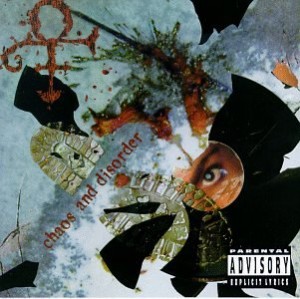 Chaos and Disorder (1996)
Chaos and Disorder (1996)
Chaos and Disorder would be his last album of new material for Warner Brothers and is widely considered as having Prince’s throwaway tracks on it so that he could simply finally get out from under his contract. However none of the songs that appeared on the record are recognized as those famous vault tracks that Prince had stored up so if it is filler, it’s new stuff he just didn’t care for. However, that doesn’t sound like something Prince would do, as even in the situation he was in the guy had too much of an ego to knowingly put out crap.
As a whole it’s a very guitar-heavy rock record led by the Hendrix like riffs in the bluesy, ”Zannalee” and the opening chords of ”I Like It There.” And although it’s a hip-hop track, ”I Rock, Therefore I Am” kind of sums up the feel of the record.
The two real highlights of the record for me are ”Right the Wrong” which has a super catchy horn-filled chorus and ”Dig U Better Dead” which is a funky almost rap track. Overall, the album isn’t very good but take a few of the ill conceived ballads out and you have a nice EP.
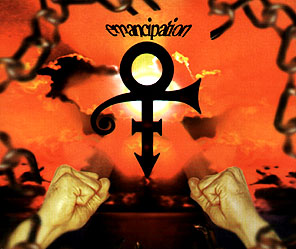 Emancipation (1996)
Emancipation (1996)
Of all Prince’s albums, this was the hardest for me to talk about. It’s not the 3-disc 36-track length or the weird exact 3-hour runtime of the set that causes me the issues. It’s the fact that I know it’s a good record but very rarely go back to it. Prince raved about the album when it came out and why shouldn’t he? Out of his contract with Warner Brothers he decided to let it all go and just blow the public out of the water with all the material he’d been working on and saving up for just this moment. One disc could have been a classic, two would have even been amazing, three is a little overkill but it’s amazing that there’s very little filler here.
The first disc is the best of the three, led right off the bat by the funky proclamation, ”Jam of the Year” and featuring two covers — the first single, ”Betcha By Golly Wow!” (the Stylistics) and ”I Can’t Make U Love Me” (Bonnie Raitt). These and ”La-La (Means I Love U)” by the Delphonics and ”One Of Us” by Joan Osborne are the first covers to appear on a Prince album and end up being four of the best songs on the set — especially the Raitt cover which is just heartbreaking and gets me all verklempt every time I hear it. The other two highlights of the disc for me are the James Brown-ish throwdown ”We Gets Up” and the catchy swing number ”Courtin’ Time.” Throw a rap verse in here somewhere and I can totally see Big Boi and Andre 3000 of Outkast coming up with this.
The second disc is the slow disc, though it has its funky moments it has more ballads on it than the other two. Quite a few songs were written for his son who died shortly after birth which makes it a solemn disc, well you know except for songs about licking her ”Joint 2 Joint.” It’s hard for me to get to the end of this one as the last five tracks are all ballads, most of them being pretty uninspired making for a long 26+ minutes to close out the disc.
The third disc is the one that confuses me the most though. After finishing the second with ballads he opens the final disc with four thumpers, led by the full electronic experimentation of ”New World” and the rap number ”Face Down” which features a horn part that you just have to throw your hands up to. However the third track — a house number called ”The Human Body” is almost unlistenable. ”Style” goes down as one of my favorite tracks on the album with all his definitions of what style is and isn’t; ”Style is not a logo that sticks to the roof of one’s ass,” ”Style is puppy breath,” ”Style is hailing a cab then you know, givin’ him the finger when they pass yo ass.” All that said, there are many moments on the third disc that are uneventful and in later years I’d think were very cheesy but somehow they seem to work here. Overall, some great moments and some terrible ones but certainly a decent set of material.
 Crystal Ball (1998)
Crystal Ball (1998)
Crystal Ball finally shows up but of course not in the original pre-Sign O’ the Times/Dream Factory form. This is either a four or five-disc set depending on how you bought it. If you bought it through the internet after release or in the stores you got a four-disc package with three discs of vault material and the acoustic disc — The Truth. If you pre-ordered it over the internet you also got an instrumental 5th disc called Kamasutra. Prince caused a lot of problems with this album however, as many of the pre-orders never got filled and the ones that did came with no liner notes — just a link to download some. And the album was never supposed to be released to stores, which kind of made the internet ordering essential at first. But it ended up showing up on racks before many of the internet orders were filled and the store version did include the liner notes. So it seemed that since so many people were pissed at him for these and other various issues, he tossed in the Kamasutra disc as a bonus. This was actually his first release on his own NPG records. He’s learned a bit about self-distribution since then, though he’ll still piss people off in the coming years with his crazy distribution.
As for the music, make no mistake, Crystal Ball is an album for collectors only. It is made up of many of the secret vault songs that reportedly number in the hundreds and show up in various forms of bootlegs over the course of time. A lot of the songs are really good but there’s a lot of indulgent songs that rightfully never saw the light of day before. If you look at the package as a whole, there’s better places to start than this, but piecemeal there are some essentials here.
The first disc leads you into a false sense of awesomeness as it begins with the phenomenal title track which should have made it to start of the second disc of Sign. It’s followed by ”Dream Factory” — another gem written about St. Paul from the Family and the Time and then by a head-bobber called ”Acknowledge Me” originally intended for the Gold Experience. The three of these are a good a start to a Prince album as almost any other. Unfortunately it goes downhill from there with unnecessary remixes and even a faux-reggae number (”Ripopgodazippa”). The only other track on the disc of note is the funk driven ”Hide the Bone.”
Disc 2 is a rock disc but lacks in variety. Tracks 2-4, ”Da Bang,” ”Calhoun Square” and ”What’s My Name” are all pretty much the same song. They all have subdued, moderately paced verses which transition into frantic instrumental rock choruses. They might as well be one big suite. The two necessary tracks close out the disc. ”Good Love” is a super catchy Camille pop song that fans already had since it was on the soundtrack to Bright Lights, Big City and ”Strays of the World” which was intended for Come but clearly doesn’t fit being a bit classical and a bit rock and ending with Prince going buckwild on the guitar. It’s often considered Prince’s equivalent of Queen’s ”Bohemian Rhapsody.” The piece you simply have to hear is ”Cloreen Baconskin” though just to laugh at how bad it is. It’s Prince on bass with ad-libbed vocals and Morris Day on drums — 15 and a half minutes of the same shit over and over.
The third disc starts off with an essential live version of ”Days of Wild” which is 100% better than the studio version which was pulled from the Gold Experience at the last minute. On it though is an unnecessary remix of ”P. Control” from the Gold Experience and ”Loose!” (titled ”Get Loose”) from Come. And his ode to endless pussy ”Poom Poom” is flat out stupid.
Overall, the three discs are a disappointing look into the vault as many of the songs before and after that have been bootlegged are way better than most of these tracks.
 The Truth (1998)
The Truth (1998)
The Truth was included with Crystal Ball as a 4th disc and is made up of (mostly) acoustic, guitar- based music and feels almost like a demo. It’s a remarkable look into his mind and definitely feels very different than anything else he’s done. The first two tracks on the disc — ”The Truth” and ”Don’t Play Me” are two of the best tracks from this era. The latter is a fascinating lyrical listen, funny and scathing at the same time with tongue-in-cheek reasons why radio shouldn’t play his music, like ”I’m over 30 and I don’t smoke weed,” ”I user proper English and I’m straight,” ”I’m the wrong color and I play guitar/my only competition is (well, me) in the past” and ”I already got laid.”
The thing about this record is you need to listen to it either loud or with headphones as Prince decided to experiment it a bit on it as well. There are a bunch of bells and whistles and plain weird shit in the background (and the alarming foreground with the clock ticking in ”The Truth”) that you miss if you don’t pay attention. 10 of the 11 tracks are mesmerizing, with only ”Animal Kingdom” not worthy. The combo of zoo noises and totally bizarre distorted vocals makes it a throwaway but otherwise it probably is the best Prince album no one has heard. And don’t let the acoustic nature of the record fool you, it’s as perverted and nasty as you’d expect from Prince.
Kamasutra (1998)
Kamasutra’s a throwaway record. Included at the last minute for the pre-orders of Crystal Ball to make it a 5-disc set, it’s credited to the NPG Orchestra and consists of 11 jazz and classical instrumentals written to be played at his wedding to Mayte Garcia. The disc is pretty dull — not nearly the jazzy tunes found on Madhouse records. In fact, at times it’s almost depressing. If this is what he wanted at his wedding so be it, but this wouldn’t have gotten anywhere near mine. In fact, my wife and I got introduced to the opening riff of ”Gett Off.”
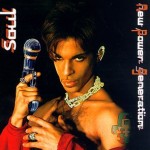 New Power Soul (1998)
New Power Soul (1998)
New Power Soul is officially the third and last album credited to the New Power Generation (1993’s Goldnigga and 1995’s Exodus being the others). Goldnigga didn’t have very much of Prince on it at all and truly did feel like a band record. Exodus definitely featured Prince on all the various segues and he was present, though as alter ego Tora Tora and his involvement was downplayed greatly. New Power Soul however is a Prince record without a doubt. His face is plastered on the cover holding his trademark microphone gun and well, ends up being a bit creepy to be honest.
Why he didn’t credit this to himself, I still don’t know but after the sprawling epics of the last two albums it certainly seems like he was just trying to put together a cohesive package that hit you over the head pretty quickly without bullshit. Critics hated it and fans were underwhelmed but I’ve always dug the record. It’s not his most creative record but compared to the lull that was about to follow this it’s gold. ”When U Love Somebody” is a pretty great pop song as is the fist pumping chant of ”Freaks on This Side.” The two best tracks get buried at the end though in ”Come On” which featured Chaka Khan on vocals and was the only single released and the next to last printed track — a monsterous ballad called ”The One.”
In part three we’ll take a look at Prince’s work from 1999 (the year) to the present day, as he hits bottom and redeems himself again.




Comments